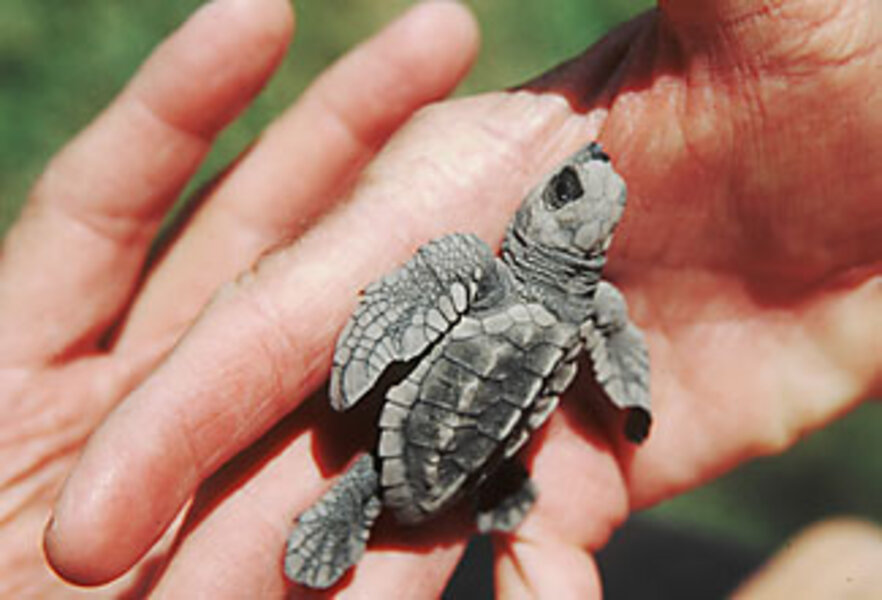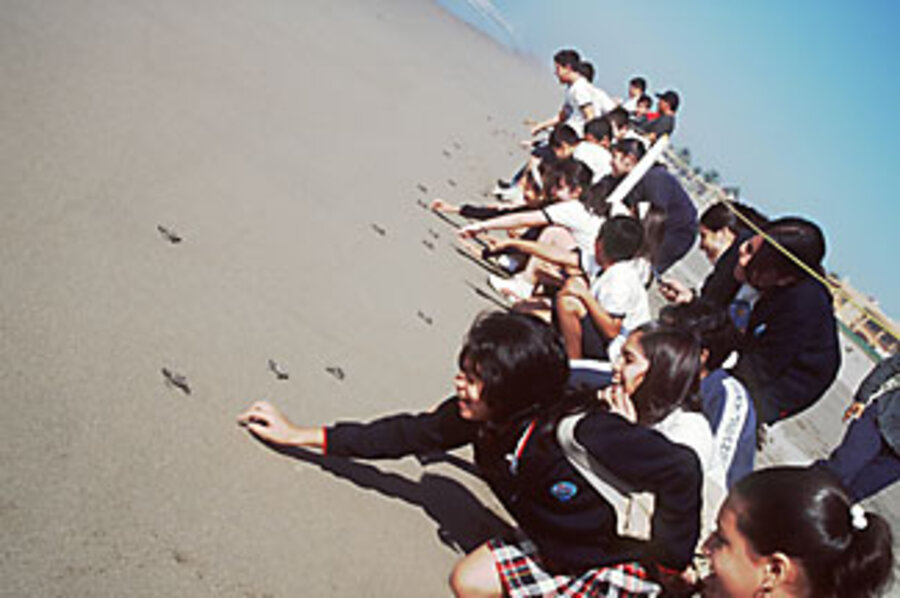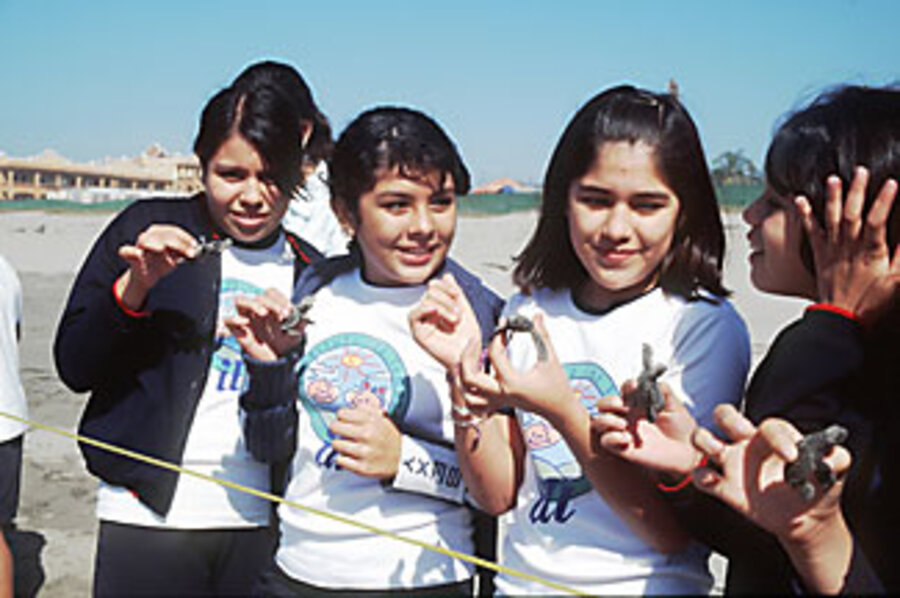Baby sea turtles – off to a good start
Loading...
| Mazatlán, Mexico
Eréndira González Diego, founder of the Turtle Sanctuary at Estrella del Mar Golf and Beach Resort in Mazatlán, Mexico, steps from the cluster of stucco buildings a shell's throw from the beach. The sanctuary invites visitors of all ages to participate in an ongoing program to protect the threatened olive ridley sea turtles that nest each year on the beach at the resort.
Dr. González greets fifth- and sixth-grade students on a field trip from a private school in Mazatlán. Families staying at the sprawling resort join them, gathering around a wading pool where a pair of sea turtles recovering from injury swim freely.
"Not every egg in a nest hatches," says the marine biologist, holding up a small jar of eggs. They look like ping-pong balls in color, size, and shape. Guests listen attentively while she explains the importance of protecting the turtles. A resort employee interprets for those who don't speak Spanish.
Although the olive ridley is the most abundant sea turtle in the world – with about 800,000 nesting females per year – it's considered vulnerable by the World Conservation Union. Prior to 1950, an estimated 10 million ridleys nested on the Pacific Coast of Mexico.
In the '60s, however, nesting females and eggs were taken for food, a practice that devastated the population. Fortunately, it's now illegal to possess turtle eggs and any type of turtle parts. State police patrol the beaches to make sure poachers don't steal eggs.
Chillin' out until time to hatch
After her brief lecture, Dr. González leads everyone into her lab, where hundreds of white coolers are stacked on shelves, floor to ceiling. When the sanctuary first opened in 1998, she recruited volunteers to dig up eggs and rebury them in safer places on the beach – places easier to protect from poachers. Sadly, a lot of eggs still didn't hatch because it was impossible to control weather and temperature. Some eggs shriveled up from too much heat or developed fungus from lengthy days of rain.
In 2004, instead of reburying the eggs, Dr. González set them in the coolers and sprinkled them with damp sand. When this strategy proved successful, she requested funds for an incubator. In 2007, resort guests joined local volunteers to dig up approximately 120,000 eggs. (Each clutch or nest contains approximately 100 eggs.) With incubators controlling moisture, oxygen, and temperature, nearly all of the eggs hatched. Incubation takes between 45 and 60 days.
Hatchlings in hand
Crowded in the narrow aisles, visitors listen to what sounds like fingernails scratching Styrofoam. Dr. González lifts a lid off one of the coolers, explaining that as soon as the newly hatched turtles begin waving their flippers, it's time to let them go. She sifts through the sand and hands out hatchlings amid oohs and aahs. Children and adults follow Dr. González outside to a path that winds to the beach.
The turtles are set down about 30 feet from the rolling surf. Like all marine turtles, instinct drives them toward the sea. And they're off, completely on their own. These natural swimmers (they can zip through the water at up to 45 m.p.h.) have a built-in food reserve that sustains them for five days – as long as they can avoid predators and fishing nets.
A flock of sea gulls swoops in, followed by frigate birds and pelicans, all sensing a quick snack. The kids scamper into the water, shouting in English and Spanish to chase them away. Olive ridleys that make it to adulthood will weigh an average of 100 pounds and spend their life at sea foraging on algae, lobster, shrimp, fish, and other organisms. Ships have spotted them 2,400 miles from shore.
After the last turtle has swum out to sea, Dr. González invites everyone to come back when large numbers of adult females will gather offshore. All at once, the turtles will lumber awkwardly from wet to dry sand to dig nesting pits with their hind flippers. "I hope to see you here in 15 years," she adds with a friendly smile, "when the babies we just released return to lay their eggs."







